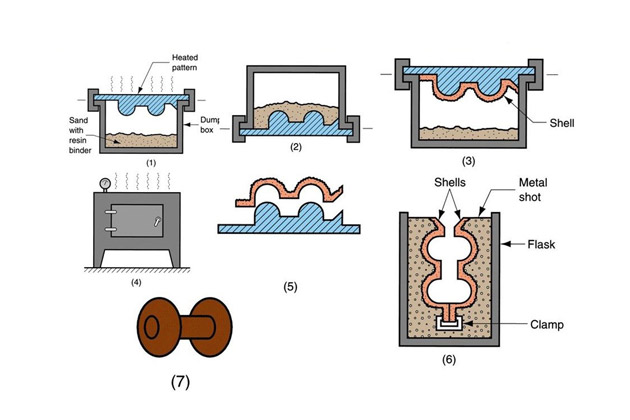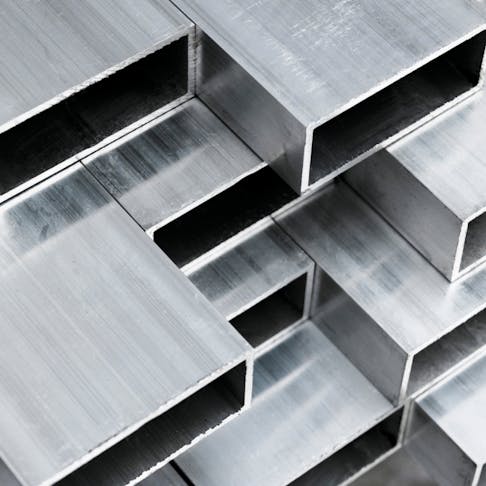Why choose Aluminum Casting over traditional materials
Whatever You Required to Find Out About the Uses and Benefits of Aluminum Castings
Aluminum castings play an essential role across various industries, offering unique buildings that enhance item performance. Their light-weight nature and toughness make them suitable for applications in auto and aerospace industries. Additionally, the flexibility of casting techniques allows for detailed styles and limited tolerances. As the need for lasting solutions increases, recognizing the advantages and applications of aluminum castings comes to be significantly vital. What certain advantages do they offer over various other products?
Introduction of Aluminum Casting Processes
Aluminum casting procedures encompass a selection of techniques made use of to shape liquified aluminum into desired types. These approaches include sand spreading, pass away spreading, and financial investment casting, each offering distinctive advantages depending upon the application (Aluminum Casting). Sand spreading includes creating a mold and mildew from sand, enabling elaborate designs and huge elements, while die casting uses high pressure to infuse molten aluminum into metal molds, ensuring precision and smooth coatings. Investment spreading, also referred to as lost-wax casting, produces intricate shapes with exceptional dimensional accuracy, making it suitable for comprehensive elements
These procedures are identified by their ability to generate light-weight, resilient parts that show exceptional rust resistance. The versatility of aluminum allows for personalization in numerous sectors, from automotive to aerospace. In addition, the capability to reuse aluminum improves the sustainability of these casting processes, decreasing ecological influence while preserving material honesty. Recognizing these techniques is vital for optimizing production efficiency and achieving top notch aluminum castings.
Key Applications of Aluminum Castings
Aluminum castings play a vital function throughout different markets, especially in auto, aerospace, and customer electronics. In the vehicle sector, they add to light-weight structures that improve fuel performance. Aerospace components benefit from aluminum's strength-to-weight ratio, while consumer electronics leverage its convenience for reliable manufacturing.
Automotive Sector Applications
As the automotive market proceeds to evolve, suppliers significantly rely on aluminum castings for their lightweight yet resilient residential properties. These castings play a vital function in improving automobile performance, fuel efficiency, and general security. Secret applications consist of engine blocks, transmission real estates, and architectural components, which profit from aluminum's outstanding strength-to-weight ratio. Additionally, aluminum castings facilitate complicated geometries, enabling for ingenious designs that improve aerodynamics and reduce drag. The corrosion resistance of aluminum additionally adds to longevity, reducing maintenance expenses for both manufacturers and customers. As electrical automobiles gain appeal, aluminum castings are vital for battery enclosures and other elements, further solidifying their importance in the future of automobile manufacturing.
Aerospace Element Manufacturing
In the aerospace industry, aluminum castings are important to the production of lightweight, high-performance parts. These castings are crucial for manufacturing parts such as engine real estates, architectural structures, and touchdown equipment parts, where weight decrease is important for gas performance and general efficiency. The superb strength-to-weight ratio of aluminum permits the development of intricate geometries that boost aerodynamics. Additionally, aluminum's resistance to corrosion adds to the durability and dependability of aerospace parts, making sure safety and security in flight operations. The casting procedure likewise permits precise resistances, which is necessary in meeting strict aerospace sector requirements. Generally, aluminum castings play a crucial function in progressing aerospace technology while supporting the industry's press for sustainable techniques.
Consumer Electronic Devices Manufacturing
Using aluminum castings in consumer electronics production has actually become progressively substantial because of their light-weight and sturdy residential or commercial properties. Makers take advantage of these castings to create components for different gadgets, consisting of smartphones, laptop computers, and gaming consoles. Aluminum's outstanding thermal conductivity additionally aids in heat dissipation, enhancing tool efficiency and longevity. The flexibility of aluminum permits for detailed designs and complicated geometries, allowing streamlined and modern looks that appeal to consumers. Additionally, aluminum castings can be quickly recycled, lining up with the expanding demand for sustainable manufacturing practices. As technology developments, the function of aluminum castings in developing cutting-edge and efficient consumer electronic devices is anticipated to expand, making them a staple in the market.

Advantages of Utilizing Aluminum Castings
While numerous products are available for spreading, aluminum attracts attention as a result of its distinct mix of light-weight residential properties, toughness, and corrosion resistance. The low thickness of aluminum makes it a perfect selection for applications where weight decrease is crucial, such as in the automotive and aerospace sectors. Its superb strength-to-weight ratio allows manufacturers to produce durable elements without including excessive weight.
Additionally, aluminum castings can be created with detailed styles and tight resistances, allowing complex geometries that are tough to attain with other materials. The adaptability of aluminum permits various casting methods, including sand, pass away, and investment casting, satisfying diverse manufacturing needs. In addition, aluminum's simplicity of machining and finishing improves its appeal, promoting the development of top quality surface area coatings. Overall, the benefits of making use of aluminum castings add to boosted efficiency and effectiveness in many applications across various fields.
Corrosion Resistance in Aluminum Castings

Natural Oxide Layer
An all-natural oxide layer forms on the surface of aluminum castings, offering a crucial obstacle against ecological variables that can lead to wear and tear. This thin, protective film is a result of the aluminum's response with oxygen in the air, efficiently protecting the underlying web steel from dampness, chemicals, and contaminants. Consequently, aluminum castings show outstanding deterioration resistance, which boosts their long life and longevity in different applications. The oxide layer is not only advantageous for security yet likewise contributes to aesthetic high qualities, as it can establish a matte surface that several sectors locate appealing. Additionally, this natural procedure reduces the need for additional finishes, making aluminum castings a cost-efficient choice for producers looking for reputable, long-lasting products.
Alloy Variations Impact
The composition of aluminum alloys considerably influences their rust resistance buildings in castings. Various alloy variants, such as 1xxx, 2xxx, and 6xxx collection, display unique degrees of sensitivity to deterioration. 1xxx alloys, mainly made up of pure aluminum, deal excellent rust resistance due to their high pureness. On the other hand, 2xxx alloys, which consist of copper, might experience substantial rust when revealed to harsh settings. 6xxx alloys, incorporating magnesium and silicon, strike an equilibrium in between strength and resistance. The presence of alloying components can enhance or reduce safety oxide layers, ultimately impacting durability and performance. Understanding these variations is vital for choosing the appropriate alloy for particular applications where rust resistance is crucial.
Style Versatility and Customization
Although different materials exist for casting applications, aluminum attracts attention due to its amazing design adaptability and possibility for modification. This versatility permits developers and designers to produce intricate forms and kinds that meet details functional demands. Aluminum Casting. The reduced density of aluminum enables lightweight designs, which is specifically beneficial in sectors such as automotive and aerospace, where weight reduction is important
Aluminum castings can be tailored to different requirements, including wall thickness, surface finish, and dimensional resistances. This versatility not just improves the aesthetic allure however also improves the efficiency of the end product. In addition, advanced techniques such as 3D printing and computer-aided design (CAD) further assist in the modification process, allowing quick prototyping and lowering lead times. Aluminum castings can properly fulfill the diverse needs of different industries while offering makers the capacity to innovate and respond rapidly to market demands.
Comparison With Other Casting Products
While various casting products each have their special benefits, aluminum continually shows superior residential or commercial properties that make it a preferred option in several applications. Contrasted to iron and steel, aluminum is considerably lighter, browse around here which decreases the total weight of ended up items, improving gas performance in auto and aerospace industries. Moreover, aluminum uses outstanding deterioration resistance, calling for much less maintenance gradually compared to products like iron, which can corrosion.
When compared with plastics, aluminum's toughness and toughness go beyond several artificial options, making it appropriate for demanding settings. On top of that, aluminum's thermal and electrical conductivity is incredibly greater than most various other metals, making it excellent for applications requiring reliable warmth dissipation or electrical elements.

Future Patterns in Aluminum Casting Modern Technology
Advancements in aluminum casting technology are set to redefine its applications throughout various markets. Technologies in automation and robotics are simplifying manufacturing procedures, improving performance and precision. The combination of synthetic knowledge and machine understanding makes it possible for real-time monitoring and anticipating maintenance, reducing downtime and enhancing quality assurance.
Furthermore, the advancement of advanced alloys is broadening the performance capacities of aluminum castings, making them ideal for even more demanding applications, especially in auto and aerospace industries. Lasting techniques are also gaining article traction, with enhanced emphasis on recycling aluminum and lowering carbon impacts throughout production.
Additive production techniques, such as 3D printing, are being discovered to develop complicated geometries that typical techniques can not accomplish, permitting for better style versatility. These patterns show a future where aluminum casting will not only fulfill yet exceed sector expectations, driving technology and sustainability in manufacturing.
Frequently Asked Concerns
Exactly How Are Aluminum Castings Recycled After Usage?
Aluminum castings are commonly accumulated, cleansed, and processed in recycling facilities. The material is melted down, improved, and afterwards changed into new items, thus preserving resources and decreasing ecological impact while keeping aluminum's desirable buildings.
What Are the Common Expenses Related To Aluminum Castings?
The common costs associated with aluminum castings vary based on aspects such as complexity, volume, and material specifications. Normally, rates vary from a couple of dollars per extra pound to significantly greater amounts for complex layouts and big quantities.
Just How Do Aluminum Castings Compare in Weight to Steel Castings?
Aluminum castings weigh considerably less than steel castings, commonly around one-third the weight (Aluminum Casting). This decreased mass allows for much easier handling, transport, and application in different sectors, adding to enhanced efficiency in design and production processes
What Industries Mainly Rely Upon Aluminum Castings?
Different markets greatly count on aluminum castings, including auto, aerospace, electronics, and durable goods. Their lightweight nature, deterioration resistance, and adaptability make them important for producing components in these sectors, improving performance and performance.
Exist Any Type Of Health And Wellness Dangers Related To Aluminum Casting Processes?
Health dangers related to aluminum spreading procedures include exposure to fumes, dust, and chemicals, which can lead to respiratory system concerns and skin irritation. Appropriate safety actions and equipment are necessary to mitigate these potential dangers in the workplace.